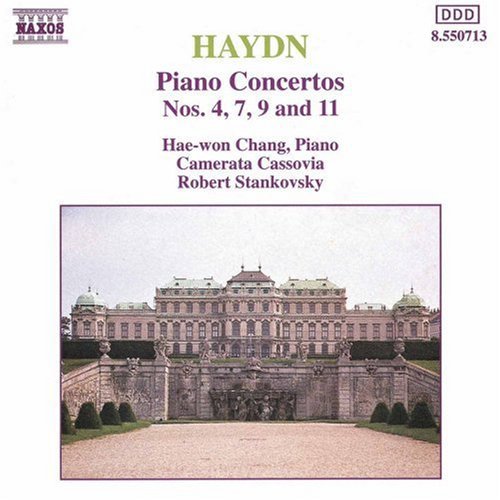Show results for
Deals
- 4K Ultra HD Sale
- 50s Films Sale
- Action Sale
- Alternative Rock Sale
- Anime sale
- Award Winners Sale
- Bear Family Sale
- Blu ray Sale
- Blues on Sale
- British Sale
- Christmas in July
- Classical Music Sale
- Comedy Music Sale
- Comedy Sale
- Country Sale
- Criterion Sale
- Drama Sale
- Electronic Music sale
- Folk Music Sale
- Horror Sci fi Sale
- Kids and Family Sale
- Metal Sale
- Music Video Sale
- Musicals on Sale
- Mystery Sale
- Naxos Label Sale
- Page to Screen Sale
- Paramount Sale
- Rap and Hip Hop Sale
- Reggae Sale
- Rock
- Rock and Pop Sale
- Rock Legends
- Soul Music Sale
- TV Sale
- Vinyl on Sale
- War Films and Westerns on Sale

Piano Concertos 4, 7, 9 & 11
- Format: CD
- Release Date: 1/28/1994

Piano Concertos 4, 7, 9 & 11
- Format: CD
- Release Date: 1/28/1994
- Composers: Franz Joseph Haydn
- Conductors: Robert Stankovsky
- Performers: Hae-Won Chang
- Label: Naxos
- UPC: 730099571326
- Item #: NAX957132
- Genre: Classical
- Release Date: 1/28/1994

Product Notes
The Concerto in G major, Hob. XVIII: 4, comes from a later period, scored for harpsichord or forte piano and strings with pairs of oboes and horns as required. It was written by 1781 and in spite of it's undoubted authenticity fell under suspicion from contemporary critics, since the name of Haydn was now being used unscrupulously by ambitious publishers and promoters. It has been suggested that this concerto, a work of obvious charm, was written for the blind pianist Maria Theresia Paradis, for whom Salieri and later Mozart wrote concertos. Asecond G major Concerto, Hob. XVIII: 9, written by 1767, is of more doubtful origin, whatever it's clear attractions, characteristic enough of the composer to whom it was ascribed. It's first movement, which opens with a forty bar orchestral exposition before the entry of the soloist, includes idiomatic keyboard writing in it's syncopation and triplet semiquaver figuration. It is followed by a G minor slow movement and a cheerful final Tempo di Minuetto. The best known of all keyboard concertos either attributed to or indisputably by Haydn is the Concerto in D major, Hob. XVIII: 11, designed for harpsichord or fortepiano and written at some time between 1780 and 1783. It is scored for the usual orchestra of two oboes, two horns and strings and appeared in a variety of editions in 1784 and thereafter. The opening orchestral exposition is entrusted to violins and violas, later joined by the whole orchestra before the entry of the soloist. The A major slow movement gives an opportunity for the display of some virtuosity and is followed by a lively and inventive Hungarian Rondo, with episodes that suggest the Turkish fashion explored by Mozart in his A major Violin Concerto.

